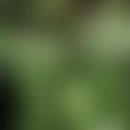DefinitionThis section has been translated automatically.
Alkaloid of the cinchona bark. Quinine was originally extracted from the cinchona tree. Oldest antimalarial drug, but replaced at the end of the 1950s by the more effective and better tolerated chloroquine.
Half-lifeThis section has been translated automatically.
You might also be interested in
Pharmacodynamics (Effect)This section has been translated automatically.
Inhibition of nucleic acid synthesis through complex formation with DNA. General protoplasmic toxin, effective against blood zoning (asexual form) of all four malaria pathogens and gametocytes of Pl. vivax and Pl. malariae.
Spectrum of actionThis section has been translated automatically.
All human pathogenic Plasmodium spp. including multi-resistant pathogens.
IndicationThis section has been translated automatically.
- Malaria: forms of malaria caused by strains resistant to chloroquine and synthetic antimalarials, particularly in complicated forms of malaria tropica.
- Calf cramps, e.g. cramps in the legs, which occur in connection with diabetes mellitus, varicosis, thrombophlebitis, arteriosclerosis, joint diseases and static foot deformities.
Limited indicationThis section has been translated automatically.
Dosage and method of useThis section has been translated automatically.
- Malaria therapy (Quininum hydrochloricum):
- Adults: 4-6 times/day 250 mg p.o. over 1 week.
- Children: 3 times 10 mg/kg bw/day p.o. for 1 week.
- Therapy of multi-resistant pathogens:
- Adults: 4-6 times/day 250 mg p.o. for 1 week plus tetracycline 4 times 250 mg/day for 1 week.
- Children: 3 times 10 mg/kg bw/day for 4 days, then 3 times 15 mg/kg bw/day for 4 days.
- Pregnant women: 4-6 times/day 250 mg p.o. for 1 week.
Remember! Before starting therapy, determine the glucose-6-phosphate dehydrogenase level!
Undesirable effectsThis section has been translated automatically.
Quinchonism (ringing in the ears, reversible hearing loss, visual disturbances, nausea, diarrhoea, headache), gastrointestinal disturbances, allergic reactions, photoallergic reactions, neurotoxic disturbances, weakening of the body's defences, hypoglycaemia, respiratory depression, blood count disturbances, teratogenicity, hypoglycaemia, photosensitisation, arrhythmias, hypotension, blindness.
Notice. A cumulative GD of 8 g leads to toxic NW (quinchonism) with disturbances in the area of the VIIIth cranial nerve and impairment of the cranial nerve. Cranial nerve and impairment of vision!
InteractionsThis section has been translated automatically.
ContraindicationThis section has been translated automatically.
PreparationsThis section has been translated automatically.
Note(s)This section has been translated automatically.
The cinchona bark (also fever bark, Jesuit powder) was already brought to Europe in the first half of the 17th century by Spanish missionaries from Peru.
TablesThis section has been translated automatically.
Significant interactions of quinine
Antacids |
Quinine toxicity ↑ |
Anticoagulants, oral |
Bleeding tendency ↑ |
Quinidine |
Photosensitization |
Ciclosporin A |
Ciclosporin A effect ↓ |
Cardiac glycosides |
Glycoside levels ↑ |
Mefloquine |
Seizures, intake 12 hours after quinine |
muscle relaxants |
muscle relaxant effect ↑ |
Pyrimethamine |
Quinine toxicity ↑ |




